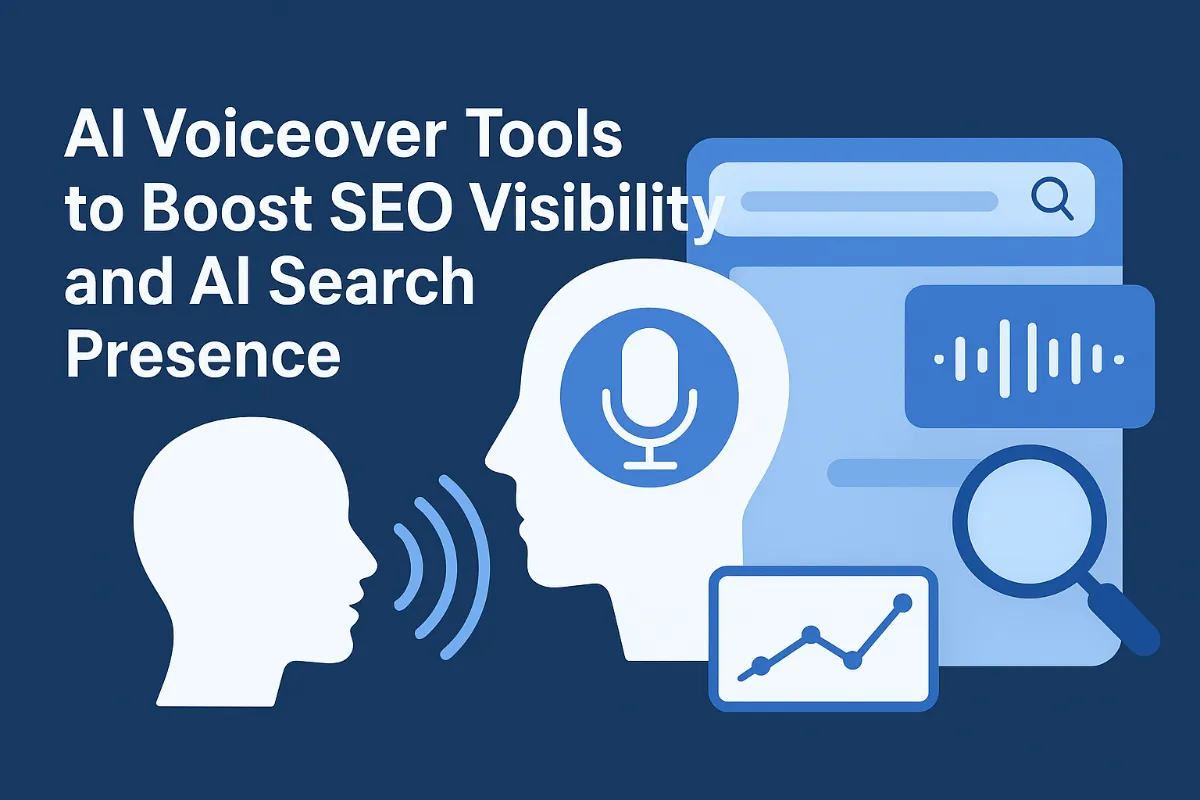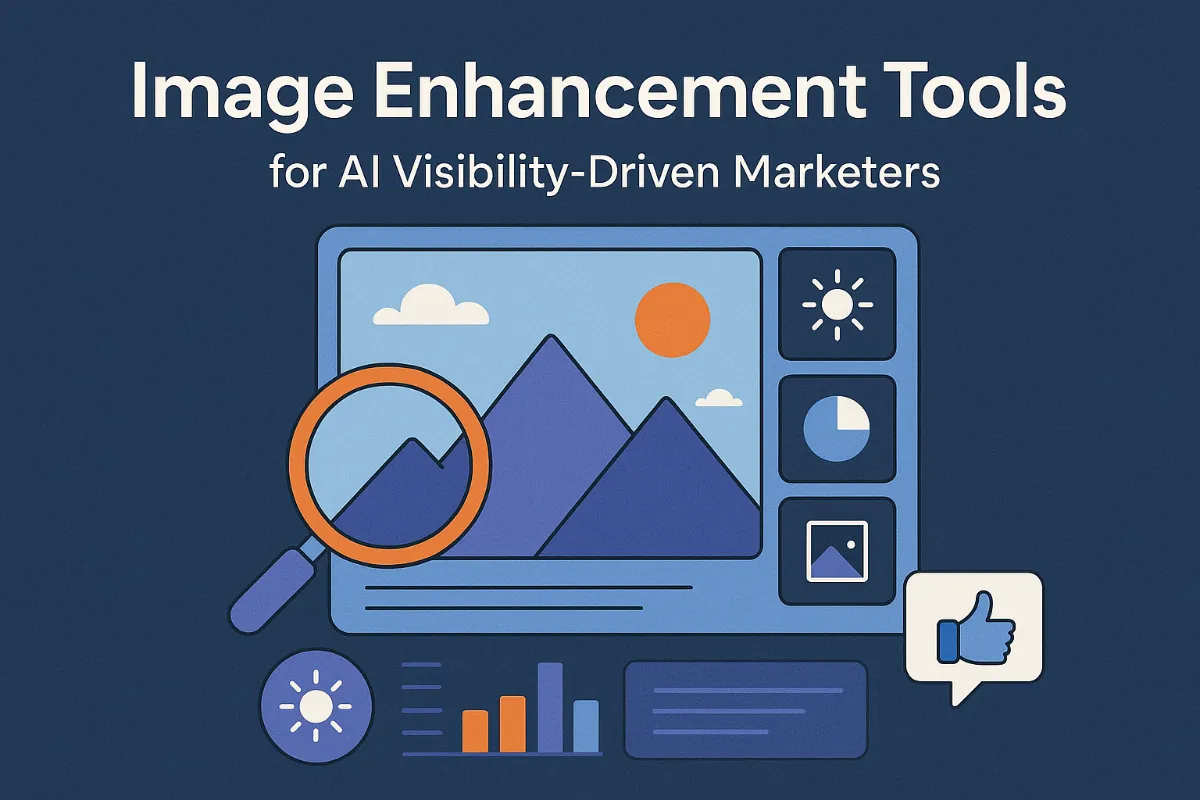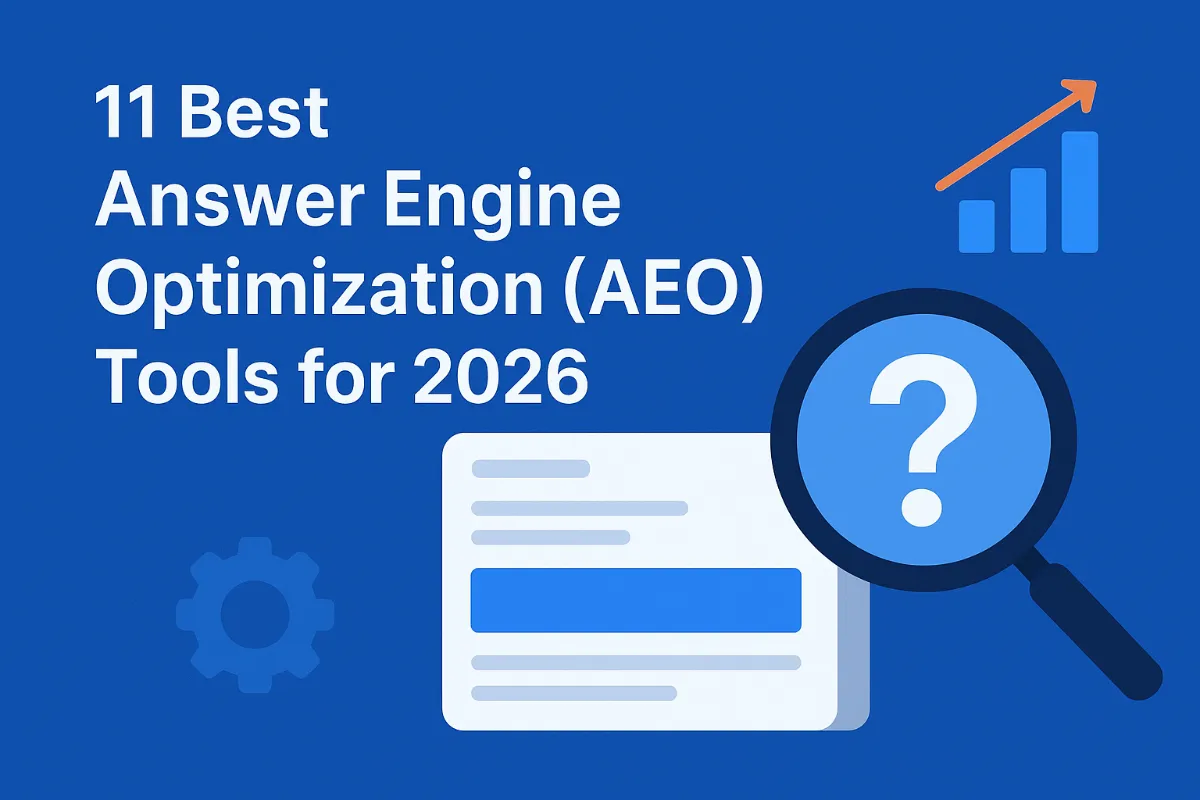10+ Programmatic SEO Case Studies & Examples in 2025
Programmatic SEO is revolutionizing how businesses approach organic growth, enabling the creation of thousands of tailored landing pages at scale. But seeing it in action is far more instructive than just understanding the theory. This list dives into over 10 real-world programmatic SEO case studies from 2025, showcasing how innovative companies are leveraging this strategy to achieve remarkable results.
You'll discover how diverse sectors, from real estate and SaaS to mobile apps and food blogging, have successfully implemented programmatic SEO to drive significant traffic, improve search rankings, and generate valuable leads. We cut through the theoretical noise to bring you actionable insights from actual campaigns. By examining these success stories, you'll gain a clear understanding of the strategies that work, the challenges overcome, and the tangible outcomes achieved. Prepare to be inspired by how these businesses are not just competing, but winning in the evolving digital landscape.
1. Scalable Content Generation
Programmatic SEO is a sophisticated strategy for generating a large volume of unique, targeted content at scale, typically through automated processes. This approach allows businesses to cover vast keyword landscapes and long-tail search queries that might otherwise be too numerous or time-consuming to address manually. Instead of writing individual articles for every potential keyword, programmatic SEO utilizes templates and data feeds to create pages dynamically. This is particularly effective for industries that have many variations of a core service or product, such as real estate listings, product comparisons, or location-specific service pages.
The core principle involves using data to inform content creation. For instance, a real estate company could programmatically generate pages for every neighborhood, detailing local amenities, school ratings, and current property listings. Each page would be unique, populated by structured data specific to that location, but follow a consistent template. This ensures that search engines can crawl and index these pages efficiently, seeing them as relevant and valuable resources for specific user queries. The efficiency gained allows teams to focus on higher-level strategy and optimization rather than repetitive content production.
Key benefits of employing Programmatic SEO include:
- Massive Keyword Coverage: Targets thousands, even millions, of long-tail keywords simultaneously.
- Increased Organic Traffic: Captures traffic from highly specific search queries that often have lower competition.
- Data-Driven Content: Ensures content is relevant and valuable by leveraging structured data.
- Scalability: Easily expands content offerings as business data grows or market demands shift.
- Efficiency: Significantly reduces the manual effort and time required for content creation.
Consider the example of Flyhomes, a real estate company that successfully leveraged programmatic SEO to scale its online presence. By creating unique pages for numerous locations and property types, they were able to capture significant search visibility across a broad spectrum of real estate-related queries. This strategy allowed them to serve a wider audience with highly relevant information, driving substantial organic traffic and leads.
To implement programmatic SEO, start by identifying data sources that can be used to generate content variations. This could be a product catalog, a list of services, geographical data, or customer-specific information. Develop content templates that incorporate placeholders for this dynamic data. Tools and scripts are essential for automating the page generation and publishing process. Rigorous testing and ongoing optimization are crucial to ensure quality and maintain search engine compliance, focusing on user experience and genuine value. This method earned its place by demonstrating an unparalleled ability to expand an online footprint rapidly and efficiently.
2. Content Clusters Boost
Content clustering is a strategic approach to organizing website content around core topics, creating interconnected hubs of information. This method involves publishing a central "pillar page" that covers a broad subject in depth, then linking it to numerous "cluster pages" that explore specific subtopics in more detail. This structure not only helps search engines understand the depth and breadth of your expertise on a given subject but also improves user navigation by guiding visitors through related content. The goal is to establish topical authority, signaling to Google that your site is the definitive resource for a particular niche.
This organizational strategy is crucial for programmatic SEO because it allows for the systematic creation and linking of vast amounts of content. Instead of creating isolated pages, you’re building an interconnected knowledge base. For instance, a company selling outdoor gear might create a pillar page on "Camping Essentials," which then links to cluster pages like "Choosing the Right Tent," "Backpacking Stove Reviews," "Best Sleeping Bags for Cold Weather," and "Campfire Cooking Techniques." Each cluster page, while focused on its specific keyword, also links back to the pillar page, reinforcing the overall topic.
The benefits of content clustering are manifold:
- Enhanced Topical Authority: Establishes your site as an expert in a given field.
- Improved SEO Performance: Signals relevance and depth to search engines, potentially boosting rankings for a range of related keywords.
- Better User Experience: Facilitates easy navigation, keeping visitors engaged longer and reducing bounce rates.
- Increased Internal Linking: Creates a robust internal linking structure, distributing link equity effectively across your site.
- Scalable Content Creation: Provides a framework for generating a high volume of content programmatically or manually.
Consider the case of a travel website focusing on specific destinations. A pillar page for "Visiting Paris" could be supported by cluster pages on "Best Museums in Paris," "Parisian Cafes for Coffee Lovers," "Day Trips from Paris," and "Navigating the Paris Metro." Each cluster page would target long-tail keywords while contributing to the overarching authority of the "Paris" topic. This structured approach ensures that every piece of content serves a purpose, not just for search engines but for the user seeking comprehensive information. Implementing content clusters requires careful planning of your core topics and an understanding of user search intent for both broad and specific queries.
3. Strategic Keyword Research
Keyword research forms the bedrock of any successful programmatic SEO strategy, guiding content creation and targeting the most relevant search queries. It's the process of identifying terms and phrases that your target audience uses when searching for products, services, or information related to your business. Effective keyword research ensures that your automatically generated content aligns precisely with user intent, maximizing visibility and attracting qualified traffic. Without a deep understanding of what users are searching for, programmatic SEO efforts can easily become unfocused and yield minimal results.
This foundational step involves analyzing search volume, competition, and user intent behind specific keywords. For instance, a company employing programmatic SEO for a large e-commerce catalog might discover through meticulous research that highly specific long-tail keywords, such as "organic cotton baby onesie size 0-3 months blue," have lower search volume but exceptionally high conversion rates. Conversely, broader terms like "baby clothes" might attract more traffic but with significantly less purchase intent. Tools like Ahrefs, SEMrush, or even Google Keyword Planner are essential for uncovering these valuable insights, identifying both high-level topics and granular, niche queries that can be efficiently scaled with programmatic content generation.
The value of robust keyword research in programmatic SEO lies in its ability to:
- Identify Content Gaps: Uncover opportunities where your competitors aren't adequately serving user needs.
- Inform Content Structure: Determine the optimal topics, subtopics, and phrasing for automatically generated pages.
- Improve User Intent Matching: Ensure that generated content directly answers the questions users are asking.
- Target High-Value Audiences: Focus on keywords that indicate a strong propensity to convert.
- Enhance Scalability: Provide a clear roadmap for generating thousands of relevant content pieces.
Consider the case of a travel website aiming to scale its content. Instead of manually writing articles for every destination, programmatic SEO can generate pages for "best budget hotels in [city name]" or "family-friendly activities in [region]." This requires initial keyword research to identify cities and regions with sufficient search interest and a clear user need for such information. The research would involve looking for keyword clusters around travel intents, budget considerations, and specific traveler types.
To implement this, start by brainstorming seed keywords related to your core offerings. Then, utilize keyword research tools to expand these into longer-tail variations, analyze their search volume and difficulty, and assess the underlying user intent. Prioritize keywords that demonstrate a clear need or problem your content can solve. This strategic approach ensures your programmatic SEO engine is fueled with data-driven insights, leading to content that resonates with searchers and drives measurable business outcomes.
4. Dynamic Page Generation
Template pages represent a programmatic approach to creating large volumes of unique content using predefined structures and dynamic data. This method is particularly effective for websites that need to cover numerous variations of a core topic, such as product listings, location-specific services, or detailed category pages. Instead of manually writing each page, a template is designed with placeholder variables that are automatically populated with specific information, generating distinct URLs and content for each variation.
This strategy allows businesses to scale their content production exponentially. For instance, a real estate company could use template pages to generate individual listings for every property they manage, each with unique details like address, price, square footage, and amenities, all pulled from a database. Similarly, a local service provider could create pages for every city or neighborhood they serve, incorporating location-specific keywords and service details. This not only expands a website's reach across a wider range of search queries but also provides highly relevant content to users, improving engagement and conversion rates.
Key benefits include:
- Scalability: Effortlessly create thousands of pages from a single template.
- Relevance: Tailor content to specific user intents and search queries.
- Efficiency: Significantly reduces manual content creation time and cost.
- SEO Performance: Targets long-tail keywords and niche topics effectively.
Consider how a SaaS company might leverage template pages for feature comparisons. By creating a template that dynamically pulls data on feature sets, pricing tiers, and user benefits for different software products, they can automatically generate comparison pages. For example, company.com/software/feature-a-vs-feature-b or company.com/software/product-x-vs-product-y. This ensures comprehensive coverage of potential comparison searches, capturing users further down the decision-making funnel.
To implement this, identify recurring content structures and data points within your niche. Develop a robust template that incorporates these variables. Then, integrate it with a data source (like a spreadsheet, database, or API) to populate the placeholders and generate unique URLs programmatically. This method is crucial for sites aiming for broad keyword coverage and deep topical authority.
5. Featured Snippet Dominance
Featured snippets, often called "position zero," represent search engine results that directly answer a user's query at the top of the page, above traditional organic listings. They provide concise information pulled from a website's content, aiming to satisfy the user's immediate information need. Capturing a featured snippet is highly valuable because it significantly increases visibility and click-through rates, positioning your brand as an authoritative source directly within the search results.
The key to securing a featured snippet lies in providing clear, direct answers to common questions within your content. Think about the questions your target audience is asking and structure your pages to answer them succinctly. This often involves using lists, tables, or short, explanatory paragraphs. For instance, if you're in the real estate industry, a page detailing closing costs should have a section that clearly lists and defines each fee, making it easy for search engines to extract for a snippet.
Benefits of Targeting Featured Snippets:
- Increased Visibility: Appearing at the very top of search results ensures maximum exposure.
- Higher Click-Through Rates: Users are more likely to click on a result that directly answers their question.
- Authority Building: Being chosen as the definitive answer reinforces your site's credibility.
- Voice Search Optimization: Many voice assistants pull answers directly from featured snippets.
Consider how sites like Flyhomes (Real Estate) or Brainly (Education) leverage this by structuring their content around specific user queries. Flyhomes, for example, might have a page answering "What are the average closing costs in Texas?" and present that information in a clear, bulleted format. Brainly, a Q&A platform, inherently structures content to answer specific questions, making it a prime candidate for snippets.
To implement this strategy, identify long-tail keywords and common questions related to your niche. Then, create dedicated content – articles, FAQs, or even product descriptions – that directly addresses these queries. Use clear headings, bullet points, numbered lists, and concise paragraphs to present the information logically. Regularly audit your content's performance and refine answers based on what's already ranking and what Google is selecting. This proactive approach helps you claim valuable real estate on the search results page.
6. Optimize Images for SEO
Image optimization is the process of ensuring your visual content is compressed, correctly formatted, and properly tagged to improve page load speed, enhance user experience, and boost search engine visibility. High-quality images can significantly increase engagement, time on page, and conversion rates, but unoptimized files can cripple your site's performance. Programmatic SEO relies heavily on efficient content delivery, and images are often the largest contributors to page weight.
When implementing programmatic SEO, generating many pages means you'll also be generating a large volume of associated images. Without careful optimization, this can lead to slow loading times, frustrating users and negatively impacting your search rankings. Search engines like Google consider page speed a critical ranking factor, and slow-loading pages are more likely to be abandoned. Beyond speed, descriptive alt text and relevant file names help search engines understand the context of your images, making them eligible for image search results and improving the overall SEO of your pages.
Key benefits of image optimization include:
- Faster Page Load Speeds: Reduced file sizes lead to quicker rendering of your pages, improving user satisfaction and reducing bounce rates.
- Improved Search Engine Rankings: Page speed is a direct ranking signal, and optimized images contribute positively.
- Enhanced User Experience: Visually appealing, fast-loading pages keep visitors engaged longer.
- Increased Image Search Traffic: Well-optimized images can rank in Google Images, driving additional relevant traffic.
- Better Accessibility: Alt text provides context for visually impaired users and search engine crawlers.
Consider a programmatic SEO campaign for a travel website generating pages for thousands of destinations. Each page might feature unique regional imagery. Instead of uploading raw, high-resolution photos that could be several megabytes each, you would compress these images to a fraction of their original size without a noticeable loss in quality. For instance, a 5MB JPEG could be reduced to under 100KB. Furthermore, you'd ensure file names are descriptive (e.g., eiffel-tower-paris-france.jpg) and provide relevant alt text (e.g., "The Eiffel Tower at sunset in Paris, France").
To implement this effectively:
- Choose the Right Format: Use JPEG for photographs, PNG for graphics with transparency, and consider modern formats like WebP for superior compression and quality.
- Compress Images: Utilize image compression tools (e.g., TinyPNG, ImageOptim, or built-in WordPress plugins) to reduce file size.
- Resize Appropriately: Scale images to the dimensions they will be displayed at on your site; avoid uploading massive images only to shrink them with CSS.
- Use Descriptive File Names and Alt Text: Incorporate relevant keywords naturally in both.
- Implement Lazy Loading: This technique defers the loading of images until they are visible in the user's viewport, significantly speeding up initial page load.
Image optimization earned its spot on this list because it's a foundational element for any programmatic SEO strategy that involves visual content. Neglecting it can undermine the success of even the most sophisticated programmatic content generation efforts by creating a technically deficient user experience.
7. Structured Data Boost
Schema markup, often referred to as structured data, is a vocabulary that helps search engines understand the content of your web pages more effectively. By adding specific code to your HTML, you provide context about your data, enabling search engines like Google to interpret entities, relationships, and attributes. This deeper understanding is crucial for enhancing your site's visibility in search results and driving programmatic SEO efforts.
When implemented correctly, schema markup can significantly improve how your content is displayed in search engine results pages (SERPs). This includes rich snippets, carousels, and other enhanced features that make your listings more attractive and informative to users. For instance, a recipe page with schema markup might display cooking time, calorie information, and user ratings directly in the search results, leading to higher click-through rates. The AIOSEO article highlights how understanding and implementing these structured data types is key to unlocking advanced search engine features.
The value of schema markup extends beyond just better SERP appearances. It helps search engines connect disparate pieces of information, leading to a more comprehensive understanding of your website's subject matter. This can be particularly beneficial for programmatic SEO, where you're generating content at scale based on data. By providing clear semantic meaning through schema, you make it easier for search engines to index and rank these pages accurately, even if they are numerous and cover specific niches.
Key benefits include:
- Enhanced SERP Visibility: Rich snippets and other rich results capture user attention.
- Improved Understanding: Search engines gain deeper context about your content.
- Increased Click-Through Rates (CTR): More informative listings lead to more clicks.
- Foundation for Voice Search: Structured data helps voice assistants find and deliver precise answers.
- Better Data Organization: Essential for managing large datasets common in programmatic SEO.
Consider a real estate website using schema markup for its property listings. By marking up details like address, price, number of bedrooms, square footage, and even amenities, the site can appear in specialized search results, such as Google's property carousels. This structured approach not only makes the individual listings more discoverable but also helps Google understand the overall inventory and authority of the real estate platform, a vital component for large-scale, data-driven SEO. Implementing schema is a technical step, but tools and plugins can simplify the process, making it accessible for sites aiming for sophisticated SEO strategies in 2025.
8. Refresh Content Strategically
Content refreshing is the proactive process of updating and improving existing website content to maintain its relevance, accuracy, and search engine visibility. Instead of creating entirely new pieces, this strategy focuses on optimizing what you already have, ensuring it continues to perform well against current search trends and user needs. This approach is crucial for long-term SEO success, preventing valuable content from becoming outdated and losing its ranking potential.
This method is particularly effective for evergreen topics that naturally evolve over time. For instance, a food blog might refresh a popular recipe post with updated ingredient sourcing, new cooking techniques, or higher-quality photography. Similarly, a SaaS company could update a "how-to" guide for its software to reflect recent feature releases, ensuring users find accurate instructions. The goal is to enhance user experience by providing the most current and comprehensive information available, which in turn signals to search engines that your site remains a authoritative source.
Key benefits of content refreshing include:
- Sustained Rankings: Prevents traffic drops as search algorithms favor up-to-date information.
- Improved User Engagement: Fresh content is more likely to resonate with current user intent and expectations.
- Enhanced Authority: Demonstrates a commitment to providing current and reliable information.
- Cost-Effectiveness: Generally less resource-intensive than creating brand-new content from scratch.
- Increased Conversions: Updated content can better address user pain points and guide them through the conversion funnel.
Consider the example of "Handle the Heat," a food blog that successfully refreshed older content. By updating recipes, adding new photos, and optimizing for current keywords, they revitalized posts that were previously underperforming. This strategy directly contributed to their growth by ensuring their established content continued to attract and engage readers, thereby boosting overall site traffic and authority.
To implement content refreshing, start by identifying your top-performing content that might be showing signs of age. Analyze its current performance metrics – traffic, engagement, conversion rates – and compare it against competitor content. Look for opportunities to add new data, update statistics, improve readability, enhance visuals, and ensure it fully answers the searcher's query. Regularly scheduled content audits are essential for identifying which pieces need attention and when. This targeted approach ensures your SEO efforts yield consistent, long-term results.
9. Food Blog Growth
Iowa Girl Eats demonstrates how a food blog can achieve significant organic growth through strategic SEO implementation. This case study highlights the power of targeted content creation and on-page optimization for niche websites. It serves as a valuable example for anyone looking to monetize a passion through blogging, particularly in competitive culinary niches.
The success of Iowa Girl Eats, as detailed in the AIOSEO case studies, hinges on a data-driven approach to content. By focusing on recipes and food-related topics that resonate with a specific audience, the blog built authority and attracted consistent search traffic. Understanding user intent and keyword research are paramount here; it's about creating content that directly answers what people are searching for, be it a specific recipe, cooking technique, or dietary consideration.
Key takeaways from this case study include:
- Niche Content Focus: Concentrating on a specific area within food blogging (e.g., healthy eating, regional cuisine, baking) attracts a dedicated audience.
- Keyword Optimization: Integrating relevant keywords naturally within recipe titles, descriptions, and body text is crucial for search engine visibility.
- User Experience: Ensuring recipes are easy to follow, well-organized, and visually appealing enhances engagement and reduces bounce rates.
- Monetization Strategy: The blog effectively uses affiliate marketing and ad revenue, showcasing how SEO directly impacts profitability.
For instance, if a food blogger wants to rank for "easy vegan lasagna," they would need to research related keywords like "quick vegan lasagna recipe," "best vegan lasagna ingredients," and "healthy plant-based lasagna." They would then create a comprehensive recipe post that addresses these queries, includes high-quality images or videos, and is optimized with these keywords.
To apply this, analyze your existing blog content for keyword gaps and opportunities. Research popular recipes and food trends within your niche, identify the search terms people use to find them, and then create or update your content to meet those needs. Prioritize clear, concise recipe instructions and leverage internal linking to guide users to related content on your site. This meticulous approach to content and SEO is what propels sites like Iowa Girl Eats to the top.
10. Strategic Site Linking
Internal linking is the practice of connecting relevant pages within your own website. It helps search engines understand the structure of your site, discover new content, and distribute link equity (or "link juice") throughout your pages. This process is crucial for improving user experience by guiding visitors to related information seamlessly. When executed properly, it enhances crawlability, which allows search engines to index more of your content.
In the context of programmatic SEO, where large numbers of pages are generated, internal linking becomes even more vital. Without a robust internal linking strategy, these pages can become siloed and undiscoverable by both users and search engines. Consider a site generating thousands of pages for niche product variations. Linking these pages logically, perhaps from a category page to specific product pages, and then back from product pages to related accessories or guides, ensures comprehensive coverage. This structured approach signals to search engines the topical relevance and authority of your entire site.
Key benefits of strategic internal linking include:
- Improved Crawlability: Search engine bots can more easily navigate and discover your content.
- Enhanced Indexation: More of your pages are likely to be included in search engine results.
- Page Authority Distribution: Link equity flows from authoritative pages to newer or less prominent ones.
- Better User Experience: Users find related content, increasing time on site and reducing bounce rates.
- Topical Relevance: Signals to search engines that your site is a comprehensive resource for specific topics.
For instance, a large e-commerce site selling electronics could implement internal linking by connecting a "Smartphones" category page to individual product pages for specific models. From each product page, links could lead to accessory pages (cases, chargers) or comparison guides. This creates a web of interconnected content that is easy for both users and search engines to traverse.
To implement this effectively, identify your high-value "pillar" pages – typically your most important category or overview pages. Then, systematically link from these pillar pages to more specific "cluster" content. Conversely, ensure that your cluster pages link back to their relevant pillar page or other related cluster content. Utilize descriptive anchor text that accurately reflects the content of the linked page; avoid generic phrases like "click here." Regularly audit your internal linking structure to identify orphaned pages or opportunities for improvement.
This practice earned its spot on the list because it's a foundational element for any SEO strategy, especially for sites employing programmatic SEO to manage a vast number of pages. Without it, the potential of those generated pages remains largely untapped.
Conclusion
Exploring these programmatic SEO case studies reveals a consistent theme: data-driven automation isn't just a futuristic concept; it's a present-day engine for scalable organic growth. Each example demonstrates how leveraging technology to generate content and optimize for specific user intents can unlock significant traffic and revenue. The common thread isn't just about building pages; it's about building systems that adapt and perform.
Don't just admire these successes – dissect them. Identify which strategies align with your niche and resources. The real value lies in translating these insights into your own experiments. Start by auditing your site for content gaps or opportunities where programmatic generation could make sense, and then begin testing. The future of SEO is efficient, and these case studies are your roadmap to getting there.





